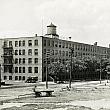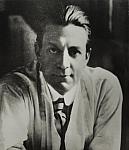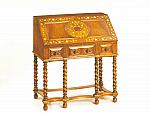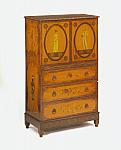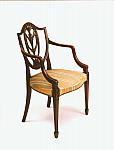Furniture Tips from King Tut
It is a far cry from Grand Rapids, Michigan to the valley of the tombs of the ancient kings of Egypt at Luxor, but modern travel and transmission of intelligence has so improved since the glorious days of King Tutankhamen that Tom Handley, designer for the Johnson-Handley-Johnson Company was able, from pictures published in the newspapers, to produce furniture showing the influence of the late King Tut while the priceless relics were still being carried from the sepulcher.
The great find of the king’s tomb shows how the public imagination can be stirred with what, but a few years ago, was supposed to be a subject suitable only for professors and archeologists.
The two pieces of furniture, which were brought out by Mr. Handley after a study of the newspaper pictures of the tomb, clearly show a definite Egyptian motif. The living room table comes in two sizes, Twenty-two by seventy-two inches and thirty by sixty inches. The coffee table measures over all twenty-seven by sixteen inches. The motif for the table ends is taken from the design of the alabaster vase found in the tomb.
The detail in the center of the tabletop is taken from the detail on the robe chest, also shown in the actual photograph taken in the tomb.
The table has style, harmony of lines, and is useful as well as suggestive of a bygone age. The table is finished in painted effects to appeal to those who want a semblance of the “real thing” in their homes, and in walnut or mahogany for those who desire it as a novelty piece of furniture. The table is all handwork.
The coffee table is finished the same as the living room table. The figures that support the table are adapted from the representations of animals that upheld the king’s daybed. The figures are fairly close reproductions of the originals and give a distinct Egyptian tone to the whole piece. The coffee table top, like the living room table, has an Egyptian motif in the center of the table decoration and in the moulding around the frieze.
“The influence of King Tutankhamen is bound to be felt to some extent in furniture,” said Mr. Handley in an interview. “It seems to me that an up-to-date architect could well consider having a ‘King Tut room’ in some of the new hotels now being built. We have already Pompeiian rooms, English rooms, Renaissance rooms, etc.”
Most of the furniture pieces I have seen from the tomb are crude, according to our outlook. They are quaint rather than refined. The urns appear to have the most graceful lines. The crudeness of the pieces will require considerable working over by clever designers before they can be put on the market in the form of saleable adaptations.
Note: Howard Carter discovered the tomb of King Tutankhamen in November of 1922.
Excerpted from, The Grand Rapids Furniture Record, by W.V. Morrow, April 1923, pages 203-204

 facebook
facebook

